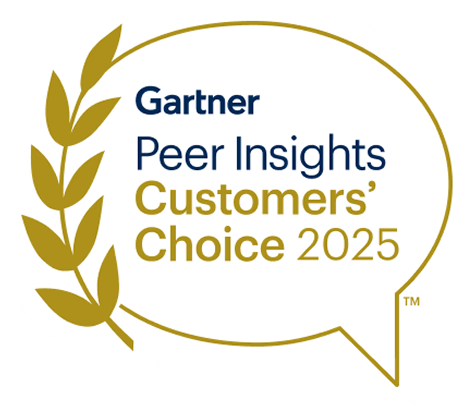How SLMs (Small Language Models) Make Sentra’s AI Faster and More Accurate
The LLM Hype, and What’s Missing
Over the past few years, large language models (LLMs) have dominated the AI conversation. From writing essays to generating code, LLMs like GPT-4 and Claude have proven that massive models can produce human-like language and reasoning at scale.
But here's the catch: not every task needs a 70-billion-parameter model. Parameters are computationally expensive - they require both memory and processing time.
At Sentra, we discovered early on that the work our customers rely on for accurate, scalable classification of massive data flows - isn’t about writing essays or generating text. It’s about making decisions fast, reliably, and cost-effectively across dynamic, real-world data environments. While large language models (LLMs) are excellent at solving general problems, it creates a lot of unnecessary computational overhead.
That’s why we’ve shifted our focus toward Small Language Models (SLMs) - compact, specialized models purpose-built for a single task - understanding and classifying data efficiently. By running hundreds of SLMs in parallel on regular CPUs, Sentra can deliver faster insights, stronger data privacy, and a dramatically lower total cost of AI-based classification that scales with their business, not their cloud bill.
What Is an SLM?
An SLM is a smaller, domain-specific version of a language model. Instead of trying to understand and generate any kind of text, an SLM is trained to excel at a particular task, such as identifying the topic of a document (what the document is about or what type of document it is), or detecting sensitive entities within documents, such as passwords, social security numbers, or other forms of PII.
In other words: If an LLM is a generalist, an SLM is a specialist. At Sentra, we use SLMs that are tuned and optimized for security data classification, allowing them to process high volumes of content with remarkable speed, consistency, and precision. These SLMs are based on standard open source models, but trained with data that was curated by Sentra, to achieve the level of accuracy that only Sentra can guarantee.
From LLMs to SLMs: A Strategic Evolution
Like many in the industry, we started by testing LLMs to see how well they could classify and label data. They were powerful, but also slow, expensive, and difficult to scale. Over time, it became clear: LLMs are too big and too expensive to run on customer data for Sentra to be a viable, cost effective solution for data classification.
Each SLM handles a focused part of the process: initial categorization, text extraction from documents and images, and sensitive entity classification. The SLMs are not only accurate (even more accurate than LLMs classifying using prompts) - they can run on standard CPUs efficiently, and they run inside the customer’s environment, as part of Sentra’s scanners.
The Benefits of SLMs for Customers
a. Speed and Efficiency
SLMs process data faster because they’re lean by design. They don’t waste cycles generating full sentences or reasoning across irrelevant contexts. This means real-time or near-real-time classification, even across millions of data points.
b. Accuracy and Adaptability
SLMs are pre-trained “zero-shot” language models that can categorize and classify generically, without the need to pre-train on a specific task in advance. This is the meaning of “zero shot” - it means that regardless of the data it was trained on, the model can classify an arbitrary set of entities and document labels without training on each one specifically. This is possible due to the fact that language models are very advanced, and they are able to capture deep natural language understanding at the training stage.
Regardless of that, Sentra fine tunes these models to further increase the accuracy of the classification, by curating a very large set of tagged data that resembles the type of data that our customers usually run into.
Our feedback loops ensure that model performance only gets better over time - a direct reflection of our customers’ evolving environments.
c. Cost and Sustainability
Because SLMs are compact, they require less compute power, which means lower operational costs and a smaller carbon footprint. This efficiency allows us to deliver powerful AI capabilities to customers without passing on the heavy infrastructure costs of running massive models.
d. Security and Control
Unlike LLMs hosted on external APIs, SLMs can be run within Sentra’s secure environment, preserving data privacy and regulatory compliance. Customers maintain full control over their sensitive information - a critical requirement in enterprise data security.
A Quick Comparison: SLMs vs. LLMs
The difference between SLMs and LLMs becomes clear when you look at their performance across key dimensions:
Continuous Learning: How Sentra’s SLMs Grow
One of the most powerful aspects of our SLM approach is continuous learning. Each Sentra customer project contributes valuable insights, from new data patterns to evolving classification needs. These learnings feed back into our training workflows, helping us refine and expand our models over time.
While not every model retrains automatically, the system is built to support iterative optimization: as our team analyzes feedback and performance, models can be fine-tuned or extended to handle new categories and contexts.
The result is an adaptive ecosystem of SLMs that becomes more effective as our customer base and data diversity grow, ensuring Sentra’s AI remains aligned with real-world use cases.
Sentra’s Multi-SLM Architecture
Sentra’s scanning technology doesn’t rely on a single model. We run many SLMs in parallel, each specializing in a distinct layer of classification:
- Embedding models that convert data into meaningful vector representations
- Entity Classification models that label sensitive entities
- Document Classification models that label documents by type
- Image-to-text and speech-to-text models that are able to process non-textual data into textual data
This layered approach allows us to operate at scale - quickly, cheaply, and with great results. In practice, that means faster insights, fewer errors, and a more responsive platform for every customer.
The Future of AI Is Specialized
We believe the next frontier of AI isn’t about who can build the biggest model, it’s about who can build the most efficient, adaptive, and secure ones.
By embracing SLMs, Sentra is pioneering a future where AI systems are purpose-built, transparent, and sustainable. Our approach aligns with a broader industry shift toward task-optimized intelligence - models that do one thing extremely well and can learn continuously over time.
Conclusion: The Power of Small
At Sentra, we’ve learned that in AI, bigger isn’t always better. Our commitment to SLMs reflects our belief that efficiency, adaptability, and precision matter most for customers. By running thousands of small, smart models rather than a single massive one, we’re able to classify data faster, cheaper, and with greater accuracy - all while ensuring customer privacy and control.
In short: Sentra’s SLMs represent the power of small, and the future of intelligent classification.
<blogcta-big>








.webp)
.webp)




